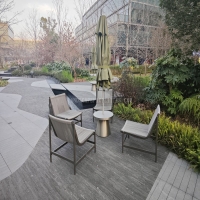Welcome to the website for landscape facilities products and knowledge.
How do manufacturers ensure that landscape bar counters are resistant to mold, mildew, and insect damage?
Manufacturers employ multi-layered strategies to ensure landscape bar counters withstand biological threats. The process begins with material selection—naturally resistant woods like teak or cedar are treated with micronized copper azole preservatives that penetrate deep into wood cells. Composite materials incorporate plastic polymers that create inhospitable environments for microorganisms through density and lack of nutrients.
Surface engineering plays crucial roles. Advanced powder coatings create seamless barriers using polyurethane resins with UV stabilizers, while penetrating sealants with mold-inhibiting compounds like zinc naphthenate block moisture absorption. Structural designs incorporate slight inclines (1-2° slope) and capillary breaks to prevent water pooling, with integrated drainage channels hidden beneath counter overhangs.
For insect resistance, manufacturers use borate-treated wood cores that deter termites and carpenter ants through ingestion toxicity. Metal reinforcement bars wrapped in insect-proof mesh provide additional protection. The finishing process involves application of antimicrobial nanocoatings that create microscopic spiked surfaces preventing spore adhesion.
Quality verification includes ASTM G21 fungal resistance tests where samples endure 28 days in fungal chambers, and AWPA E1 termite testing demonstrating >90% survival rates. These methods combine to create outdoor bar counters that maintain structural integrity and appearance through seasonal changes without chemical maintenance.
Related search:

Recommendation
Metal structure rattan chair without armrests for single person, with woven seat and backrest.